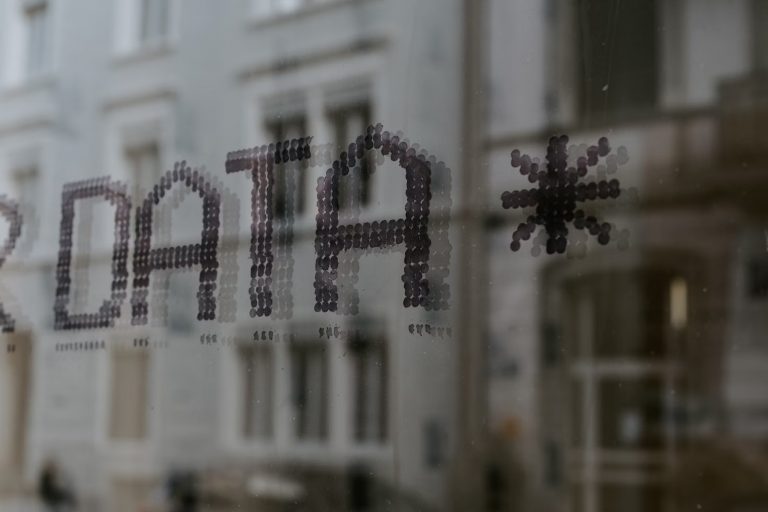
Have you ever gotten that sinking feeling after realizing you might be a data breach victim? In today’s digital world, these incidents are becoming frighteningly common.
Hackers are constantly evolving their tactics, putting our personal information at risk. According to Statista, over 3,200 data breaches occurred in 2023, affecting at least 353 million individuals. This represents a 1.78x increase in data compromises compared to 2022, where about 423 million individuals were impacted.
These stats serve as a reminder of why staying informed is crucial. This blog post highlights the five most high-profile data breaches of the year, shedding light on how they occurred and their impacts.
#1. Truist Bank Data Breach
In June 2024, Truist Bank, one of America’s top 10 commercial banks, reported a data breach in October 2023. A hacking group named Sp1d3r claimed responsibility. The stolen information of 65,000 employees is on sale on BreachForums (an illegal marketplace) for $1 million.
Truist Bank, which manages over $500 billion in assets, notified only a handful of clients at the time of the breach. This breach exposed sensitive employee information, including emails, phone numbers, street addresses, and bank transaction data, leading to identity theft and fraud concerns.
Truist’s response included notifying affected individuals and enhancing their security measures to prevent future incidents.
#2. Tile Data Breach
Also in June 2024, Life360, the company behind the Tile tracking device, uncovered a breach in their databases. The breach included names, physical domiciles, email addresses, phone numbers, and purchase order details. 404 Media reveals that the hackers targeted the company for extortion.
Life360, the parent company of Tile, responded swiftly, notifying affected users and cooperating with law enforcement. This breach emphasizes the importance of an identity authentication provider to ensure robust security measures. These authentication systems help prevent fraudulent access and protect user data.
AU10TIX recommends opting for a holistic identity management system, as it helps protect against the most sophisticated identity scams.
#3. Bank of America Data Breach
In February 2024, Bank of America disclosed a data intrusion that compromised the personal information of over 55,000 customers. Forbes explains that the breach involved unauthorized access to names, addresses, phone numbers, mailing lists, and account numbers.
The bank became aware of the breach on November 24. However, consumers weren’t informed before February 1, or about 90 days following the breach discovery. This means that the bank violated the federal notification laws. The breach was discovered via routine security monitoring.
The bank is now offering affected customers free two-year identity theft protection services. This incident highlights the necessity for continuous security vigilance and the implementation of advanced security measures to protect sensitive financial data.
#4. Dell Data Breach
In May 2024, Dell informed customers of a data breach that compromised home addresses and order information. No financial data was accessed, but data from 49 million customers was posted for sale on online hacker forums.
Dell’s response included notifying customers, improving their cybersecurity infrastructure, and cooperating with authorities. This incident demonstrated the ongoing threat to large corporations and the necessity of robust security frameworks.
#5. Anthropic Data Leak
In April 2024, Anthropic, an AI research firm, experienced a data leak that exposed non-sensitive user data to an unauthorized external party. The breach occurred due to a human error when a contractor mistakenly shared it with another party.
The leak contained customer names and open-credit Anthropic balances until December 31, 2023. In response, Anthropic notified the affected users and provided appropriate counsel. Moreover, the company maintained that the breach was unrelated to the recent FTC investigation.
Commonly Asked Questions
Q1. What Are the Most Common Causes of Data Breaches?
According to Stanford University, human error is the leading reason for data breaches. Other factors are phishing, malware, and brute-force attacks. Insider threats and ransomware also play significant roles. As cybercriminals evolve their tactics, maintaining robust cybersecurity practices is essential for prevention.
Q2. What Are Some Signs That My Data May Have Been Exposed to a Breach?
If you start receiving suspicious emails or calls, notice unrecognized bank charges, or have trouble accessing your online accounts, your data is compromised. Alternatively, you can use the Have I Been Pwned website or IdentityForce software to check if your data is available online. Staying alert to unusual activity is crucial.
Q3. What Should I Do If I’ve Been Affected by a Data Breach?
If you suspect a breach, act quickly. First, change your passwords for all affected accounts. Ensure you don’t use the same password twice. Enable multifactor authentication (MFA) and monitor your financial statements. You can also freeze your credit to prevent fraudulent accounts from being created in your name.
In conclusion, these data breaches serve as wake-up calls for companies and individuals. Being informed about such incidents is crucial for everyone. They serve as a reminder that no organization is immune to cyberattacks.
The good news? We can pick up on these breaches. Companies can strengthen their defenses, and citizens can take measures to protect their sensitive information. Remember, vigilance is key. As technology evolves, so must our efforts to protect our digital lives.

